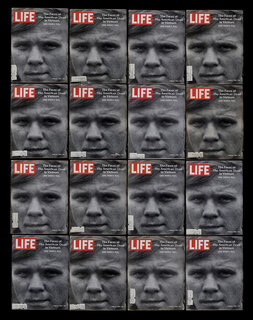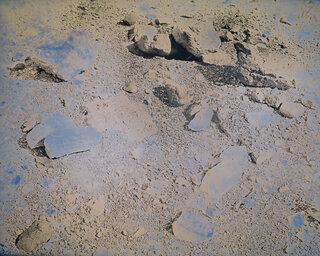
The outer border of this raffia panel features a cut-pile technique often referred to by Western observers as "Kasai velvet." The plush surface was created by female artists who adorned the woven foundation with geometric designs by embroidery or sewing “plush” motifs. The cut-pile patterns are made by pulling strands of died raffia through the warp and weft threads of the cloth foundation - which was historically created by male weavers - and cutting them to a uniform height that extends beyond the surface of the textile. The cut-pile fibers are not secured using knots but are held in place by the tightness of the weave from the foundation. It was common for several women to collectively work on a single textile, often resulting in a wide array of patterns in a single cloth.




